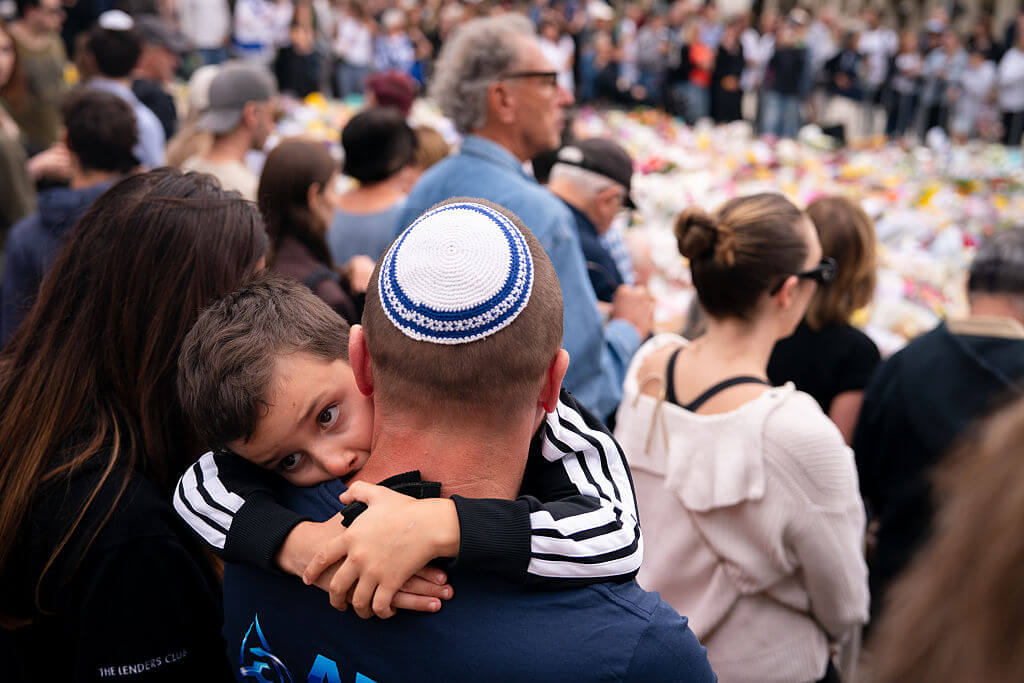Racing To Rescue Shoah Evidence
That the Holocaust was one of history’s most well-documented crimes is well-known. But few people know just how much documentation — “evidence” of the crime — remains yet to be identified.
Finding these original materials, preserving them and making them available for research is fundamental to the mission of the United States Holocaust Memorial Museum. But with the eyewitness generation diminishing, and all these materials in a state of natural deterioration, rescuing the evidence is a race against time.
How, though, do we find these precious materials? Often it is straightforward, many times it is serendipitous and sometimes it is the result of good detective work. Always it requires the generosity of individuals willing to part with something priceless and personal.
A year ago, the museum received an unsolicited package: a 500-page diary, dating from 1933 to 1936, of a man named James McDonald. The sender, Patricia Sugrue Ketchum, had found it in her late father’s papers, where it had been since 1948.
As a curious museum archivist was cataloguing the diary, he came across an intriguing section. It detailed a conversation between McDonald and an official of the Roman Catholic Church in January 1935 about a quid pro quo whereby the church would help Jews flee Germany in exchange for American influence to help the church in Mexico. The church official was Eugenio Pacelli, later to become Pope Pius XII. But who was this McDonald?
Our archivist discovered that McDonald’s papers were at Columbia University, to which they had been donated in 1972 by Mrs. Halsey Barrett and Mrs. Archibald Stewart. Through further detective work, he found Barrett living in Bronxville, N.Y. When our archivist explained what he had in his possession, she acknowledged that she was McDonald’s daughter and authenticated the diary. Then our archivist asked what could be called the mantra of his profession: “Might there be anything else from your father?”
Barrett referred our archivist to her sister, Barbara Stewart. It turned out she had over 12,000 pages of diaries in addition to correspondence, photographs and memorabilia — a huge collection — sitting in her home.
When the pieces of the puzzle were assembled and the diaries reunited, they revealed the portrait of an individual who as both a private citizen and public official met — or knew well — many major figures of his era. These included world leaders ranging from Presidents Hoover, Roosevelt and Truman to Mussolini and Hitler; Middle Eastern leaders from Prince Faisal and King Abdullah to Chaim Weizmann and David Ben-Gurion; and philanthropists such as the Warburgs, Rothschilds, Rockefellers and Henry Ford. McDonald was in places as diverse as Dachau and the White House, the Evian Conference and the Vatican. He was in Hitler’s Germany, Mussolini’s Italy and British Palestine.
During the 1930s, as the League of Nations high commissioner for refugees and then chairman of the President’s Advisory Committee on Political Refugees, McDonald struggled to help increasingly desperate Jews seeking refuge. Angered by the world’s indifference, McDonald resigned from the League in a scathing public attack. Later, as a member of the Anglo-American Commission on Palestine, he was instrumental in the recommendation that 100,000 Jews be admitted to Palestine over British objections. As the first American ambassador to Israel, McDonald was an important advocate for the Jewish State during its formative years.
Spanning the 1920s through 1951, the diaries shed light on many aspects of the period: that to McDonald the nature of Nazi antisemitism and where it could lead was evident from the beginning; that Roosevelt was more involved in foreign policy during the 1930s than heretofore suspected; that Secretary of State George Marshall eventually became supportive of Israel after initially raising strong objections to its creation; that Truman had at times a tense relationship with Israel, especially regarding the question of Palestinian refugees, Jerusalem, the Negev and crucial battles during the Israeli War of Independence; and that the Truman administration was very concerned about the possibility of communism in Israel. The diary also reveals McDonald’s frustrations with the Vatican, the lack of Jewish unity, and the failure of Jewish and Western leaders to take Hitler seriously enough.
Six decades after the Holocaust, the McDonald diaries illustrate the extent to which we are still learning about this tragic era. The wealth of information in the diaries could have been lost to history were it not for an unsolicited donation that set in motion an archival odyssey, culminating in the restoration of McDonald’s heroic efforts to the historical record.
Like so many others preserved for posterity in the museum’s collections, this story highlights our collective responsibility to “rescue the evidence” of Holocaust history — before it is too late.
Sara Bloomfield is director of the United States Holocaust Memorial Museum.
















